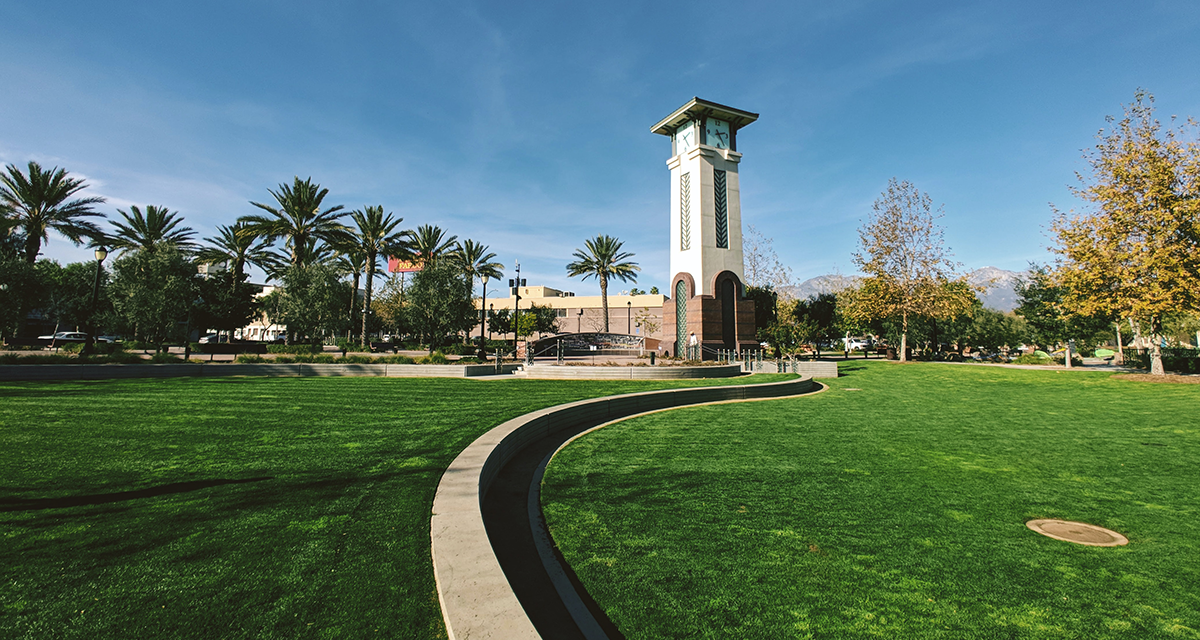Tucked in Southern California’s vibrant heart, Ontario’s story is one of pioneering innovation, rich cultural diversity, and transformation from agricultural roots to a bustling urban landscape.
This blog post jumps into Ontario’s journey from its foundation to its status as a dynamic city.
The Genesis: Establishing a Model Colony
Founding Visionaries: The tale of Ontario begins in the late 19th century with Canadian brothers George and William Chaffey. They envisioned a “Model Colony” that balanced agriculture and community, a vision that laid Ontario’s foundation.
Innovation in Irrigation: The Chaffey brothers introduced advanced irrigation methods, transforming the arid region into fertile land ideal for citrus farming. This agricultural revolution was the cornerstone of Ontario’s early prosperity.
The Citrus Boom: The success in agriculture led to a citrus boom. Ontario became synonymous with lush orange groves, attracting farmers and families, thus shaping its early community life.
A Century of Transformation: From Orchards to Industry
The Shift to Industrialization: As the 20th century progressed, Ontario began diversifying its economy. The shift from a purely agricultural society to embracing industrialization marked a new era of growth and development.
The Route 66 Connection: Route 66, America’s iconic highway, ran through Ontario, bringing a wave of economic and cultural change. This period saw the rise of roadside businesses and a boost in tourism, greatly influencing the city’s cultural and economic fabric.
Ontario’s Modern Epoch: An Urban Powerhouse
Rise of the Logistics Industry: Today, Ontario is a significant player in the logistics and freight industry, thanks to the Ontario International Airport and the city’s strategic location near major highways.
Cultural Heritage and Arts: Ontario has preserved its rich heritage through cultural centers and events despite urbanization. The city’s commitment to celebrating its diverse cultural past is evident in its museums, art galleries, and festivals.
Q&A: Exploring Ontario’s Rich History
Q: How did Ontario’s agricultural past shape its early community?
A: Ontario’s agricultural success, particularly in citrus farming, attracted a diverse population, fostering a close-knit, community-focused culture still evident today.
Q: What role has transportation played in Ontario’s development?
A: The advent of Route 66 and the development of railroads and the airport were crucial in positioning Ontario as a trade and logistics hub.
Q: How has Ontario balanced growth with environmental concerns?
A: Ontario has implemented green initiatives and sustainable practices to maintain environmental balance amidst urban expansion.
Q: Can you talk about Ontario’s transformation in the 20th century?
A: The 20th century was a significant change for Ontario, marked by industrial growth, population boom, and urban expansion, reshaping its identity.
Q: What makes Ontario unique in the context of Southern California?
A: Ontario’s unique blend of historical heritage, cultural diversity, and economic vitality sets it apart in the region.
Q: What future developments are planned for Ontario?
A: Plans include expanding the city’s technological infrastructure, further developing arts and culture, and enhancing public spaces.
Ontario’s Ongoing Saga
Ontario’s evolution from a visionary agricultural settlement to a thriving modern city exemplifies resilience and progress.
This journey reflects how a city can flourish through embracing change while staying connected to its roots. Ontario’s history, rich with chapters of innovation, community, and transformation, is a testament to urban development’s dynamic nature.
As Ontario grows, it remains a city that cherishes its past while boldly marching towards a promising future.
What lessons can we learn from Ontario’s history, and how can these insights inform the future development of similar cities? How will Ontario continue to evolve while maintaining its unique identity?





